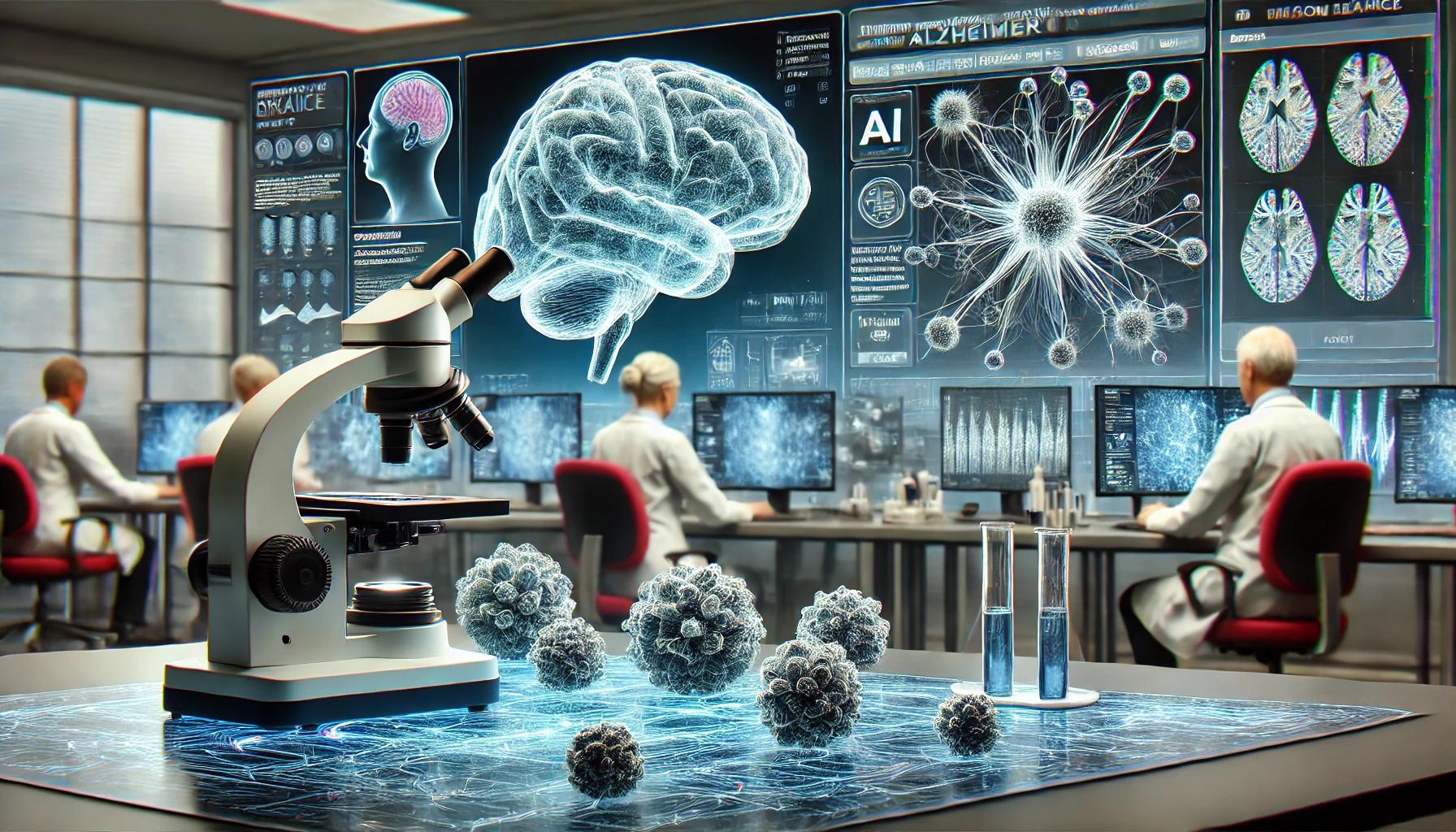Health News
ai brain research, alzheimer’s disease, alzheimer’s prevention, alzheimer’s risk factors, alzheimer’s study, alzheimer’s treatment, amyloid-β plaques, brain aging, brain cell dynamics, brain cells alzheimer’s, brain health aging, cellular pathways, glial cells, machine learning alzheimer’s, neurofibrillary tangles, personalized medicine
New Study Reveals Two Distinct Paths of Brain Aging: Alzheimer’s Disease or Healthy Aging?
A groundbreaking study has shed new light on one of the most pressing questions in aging research: is Alzheimer’s disease simply a form of accelerated aging, or does it follow a distinct path in the brain? According to new research, there are two different cellular paths that determine whether a brain ages healthily or progresses towards Alzheimer’s disease. This discovery, based on the analysis of 1.65 million brain cells from aging adults, provides valuable insights into the development of Alzheimer’s and opens the door to new, personalized treatment approaches.
The Discovery: Two Paths of Brain Aging
In a comprehensive study published in Nature, researchers used advanced technologies and machine learning algorithms to map out brain cells and analyze the differences between healthy aging and Alzheimer’s progression. The study analyzed brain cells from 437 individuals, pinpointing specific cellular changes that take place as the brain ages. The findings revealed two distinct paths of aging: one leading to Alzheimer’s disease and the other representing a healthier, non-Alzheimer’s form of aging.
This major discovery offers new opportunities for personalized treatments that could delay or prevent the progression of Alzheimer’s disease by targeting specific cellular changes early on.
Cellular Communities and the Role of Glial Cells
A key finding from the study was the identification of specific cellular communities within the brain. These cellular groups, primarily neuronal and glial cells, were found to follow either a healthy aging path or a path that leads to dementia and cognitive decline. Glial cells, which support the function of neurons, were identified as playing a significant role in the progression of Alzheimer’s disease. These cells were linked to the buildup of toxic proteins, such as amyloid-β plaques and neurofibrillary tangles, the hallmark features of Alzheimer’s.
The research team uncovered two different groups of microglial cells, each playing distinct roles in the disease. One group was found to drive the buildup of amyloid-β plaques, while the other contributed to the later stages of the disease, influencing the formation of neurofibrillary tangles.
How Early Changes in Brain Cells Predict Alzheimer’s Disease
What makes this research particularly exciting is that it identifies cellular changes that begin long before the onset of symptoms. By tracking how these brain cells change as people age, the researchers were able to predict which individuals were at risk of developing Alzheimer’s disease and which were on track to experience healthier brain aging.
This early detection could be key to personalized prevention strategies. Knowing how the brain’s cells shift could allow for targeted treatments aimed at halting or slowing the progression of the disease before memory loss and cognitive decline set in.
The Role of Machine Learning in Unveiling Alzheimer’s Pathways
The study’s success relied heavily on machine learning algorithms that could process the vast amounts of data generated from 1.65 million brain cells. A new algorithm called BEYOND was used to model the cellular dynamics within aging brains, enabling researchers to pinpoint the exact cellular changes that occur in Alzheimer’s disease and healthy aging.
Using this technology, the researchers were able to map the two distinct aging pathways and identify the specific cell types involved. This work lays the foundation for future AI-driven therapeutic development, where personalized treatments could be created to target specific cellular processes.
Implications for Treatment and Prevention
With these findings, researchers now have a deeper understanding of how Alzheimer’s disease develops at the cellular level, offering new avenues for personalized medicine. As Alzheimer’s begins to develop many years before symptoms appear, early intervention could potentially alter the course of the disease.
The identification of specific cellular signatures in both the healthy aging and Alzheimer’s pathways means that future treatments could be tailored to the individual’s unique cellular profile. This could lead to preventive strategies aimed at halting the disease before it fully manifests.
The Role of Glial Cells in Alzheimer’s Progression
One of the key breakthroughs of this study was the recognition of the important role glial cells play in Alzheimer’s progression. Microglia and astrocytes, traditionally seen as supportive cells for neurons, were found to be major contributors to the disease’s progression. These cells, which help maintain healthy brain function, appear to malfunction in Alzheimer’s, leading to the buildup of amyloid-β plaques and toxic neurofibrillary tangles.
Targeting these specific glial cell functions could be a critical focus of future Alzheimer’s treatments. By intervening early and preventing these cells from triggering toxic protein buildup, scientists may be able to prevent the onset of dementia and cognitive decline.
Looking Ahead: A New Era in Alzheimer’s Research
The insights from this study not only solve a long-standing mystery about Alzheimer’s disease but also offer a new framework for understanding how the brain ages. By mapping the distinct cellular pathways that lead to healthy aging or Alzheimer’s, researchers have paved the way for personalized prevention strategies that could transform the way we approach brain health in the aging population.
With further research, it may be possible to develop personalized treatments that target specific cell types involved in the disease’s progression, giving individuals at risk of Alzheimer’s a better chance at healthy aging.



